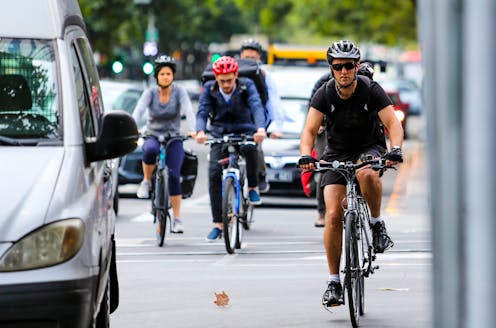Less than 1% of the 12 million Australians who travelled to work on Census Day in 2021 rode a bicycle to get there. Bicycles are readily available and affordable. Cycling also supports healthy, liveable and sustainable cities .
Yet most of us shun this form of transport in Australia. The number of people cycling to work fell by 26.4% between 2016 and 2021.

So, on World Bicycle Day , we ask why is this form of transport so undervalued and neglected? We offer the following ideas about what needs to happen so more of us use bicycles for everyday transport. Remember the pop-up cycling lanes during COVID and how quickly many of them vanished? With multiple local and state governments managing roads across the country, we have no way of knowing where all the painted or separated cycling lanes currently exist. Better-connected cycling infrastructure is needed to increase the use of bicycles for transport.
At present we don’t understand how well, safely and equitably cycling routes connect up across Australian cities. Deep-learning artificial intelligence (AI) methods can help pinpoint areas with limited or no cycling infrastructure across the nation. The Australian Urban Observatory will lead a new research project to trial this technology.
AI could help governments identify neighbourhoods lacking cycling infrastructure and end-of-trip facilities, street signs, measure cycling participation and monitor cycling lanes to ensure they’re well marked and maintained. Deep-learning AI .























